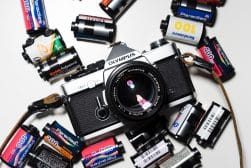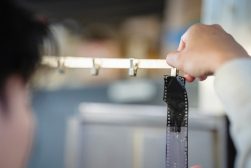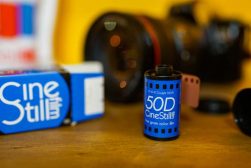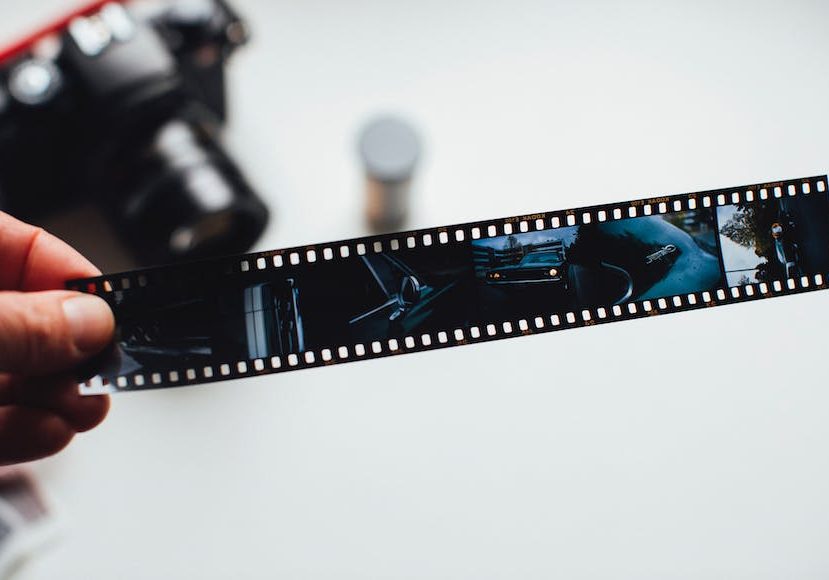
Beginners Guide to Film Cameras in 2024
Embark on your film photography journey with this beginner’s guide, looking at types of film cameras, pros & cons, tips for buying, and more.
Welcome to our beginner’s guide to film cameras and film photography.
For beginners, choosing a film camera is an exciting first step into the analog realm – a place where every photographer should, at some point, tread.
In this guide, we’ll look into everything about film cameras, from how they work to the different types and what you need to think about before buying one.
Ready? Then let’s start.
Film Cameras vs Digital Cameras: Which Is Better for Photography?
The choice between film and digital cameras ultimately depends on a photographer’s individual preferences, needs, and desired photographic experience.
People were beginners on analog cameras back before digital cameras even existed, so if they want to, they can be beginners at film photography now.
However, there’s no denying the convenience of digital cameras.
Let’s look at some of the pros and cons of each, so you can decide which system would be best for you.
Film Cameras
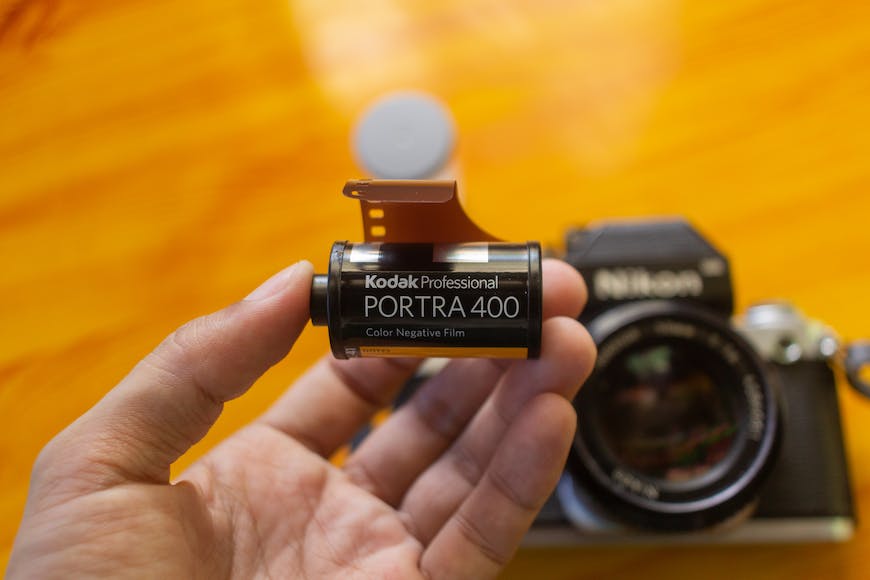
Credit: Robert Forever Ago
Film photography offers a unique, classic aesthetic that digital photography doesn’t, and many photographers love this. Film grains and unique color tones give it a distinct visual appeal.
Film photography is a slower, more mindful experience. Having limited exposures on a film roll encourages a more thoughtful and deliberate approach to photography.
Each shot has to count. You have to really want to take it before pressing the shutter.
Using an analog camera can also enhance your fundamental photography skills.
You don’t have the immediate feedback of a digital screen, and you need to understand how your settings will affect your image.
Because of this, beginners have to pay more attention to composition, exposure, and lighting.
They have to have a deeper understanding of the basics of photography – aperture, shutter speed, ISO – and understand it quicker than a digital shooter.
Being made to work and learn quickly in this way gives film photographers a strong foundation for the future.
There’s also a nostalgic feel to using an analog camera. No matter your age, through it, you feel connected to the roots of photography and its evolution.
However, as satisfying as film photography can be, it’s not a rose garden.
Costs – buying film, developing, and printing – accumulate quickly. This ongoing expense can deter some beginners.
Also, the lack of immediate feedback means photographers may not discover exposure or composition issues until the film is developed. That can be frustrating.
There’s also the inconvenience of film photography. Analog cameras are bulkier, and the process of loading, unloading, and developing film is more time-consuming compared to digital workflows.
Digital Cameras
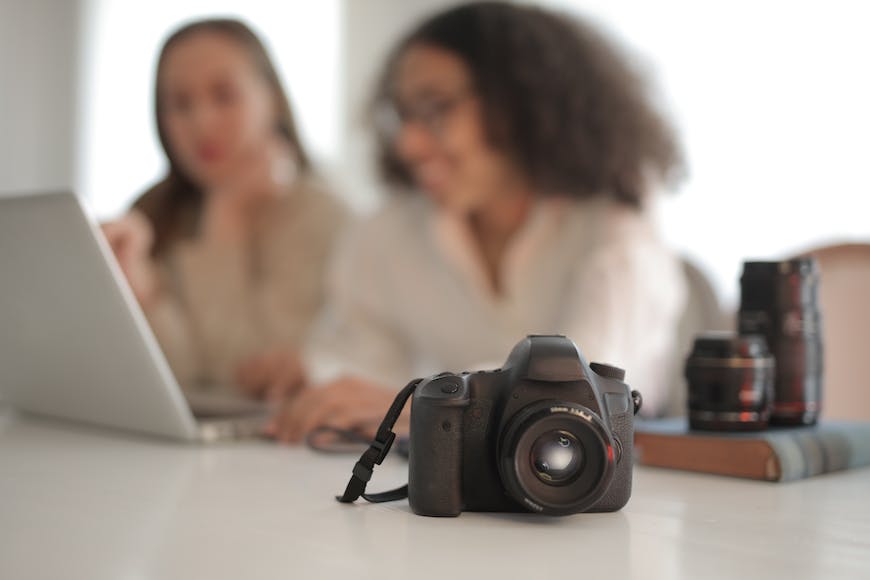
Credit: Andrea Piacquadio
One of the best things about digital cameras is that they provide immediate feedback through their LCD screen. That means photographers can check and adjust their settings and composition on the spot.
They also offer a much wider range of settings and features, for example, various shooting modes or white balance options, as well as automatic or custom modes that do some of the work for the photographer.
Many of them also have highly customizable menus and interfaces, so you can set them up to suit your personal shooting style.
They’re cheaper in the long run, and more convenient.
Digital cameras are more expensive upfront, but there are no ongoing expenses for film and processing. This is more cost-effective over time.
They also tend to be more compact, lightweight, and convenient for travel. The absence of film rolls also simplifies the shooting process.
But all that convenience, all that modernity, comes at a cost.
Digital sensors cannot replicate the look and feel of film. They can try, and they come close, but they will never replicate it exactly.
And, just like the look of film lasts forever, film cameras (barring any need for repairs) also last forever.
Digital camera technology is still advancing – and advancing quickly. This means that these cameras often become dated or even obsolete fairly quickly, and that requires frequent upgrades to be made.
Also, thanks to their functionality, photographers can have their hands held, and may not even develop the basic skills of photography. If you gave them a film camera, they’d be lost.
And, the digital camera’s greatest benefit can also cause problems of its own.
Having instant feedback means a photographer is constantly checking their output, not staying in the moment, and not trusting their skills.
Not only that, but this, alongside the almost unlimited amount of exposures you can take, can lead to a ‘spray and pray’ attitude to photography that is skill-free and ends up giving the photographer more work to do, with millions of photos to process.
And, on the subject of post-processing, because the software is so powerful, beginners might become overly reliant on it. They may neglect the importance of getting settings right in-camera.
You can make digital photos look like film photos, but this is an extra editing step most people don’t want to do.
How Does a Film Camera Work?
As with all photography, the process begins with light entering the camera through the lens.
The lens focuses and directs the incoming light onto the film plane.
You control the amount of light that enters by changing the aperture and the shutter speed.
The light then lands on film, a light-sensitive material coated with silver halide crystals.
When exposed to light, these crystals undergo chemical changes, and these changes capture the image formed by the lens.
That image will be whatever you saw through the viewfinder.
After each shot, you need to wind the film on manually to prepare it for its next exposure.
Once an entire roll of film has been exposed, it needs to be rewound into its cassette, and the film can then be removed and sent for processing and development.
Is It Hard to Use a Film Camera?
Yes and no.
Using a film camera presents some challenges that digital cameras don’t throw up, but that doesn’t mean they’re hard to use; there’s just a steeper learning curve.
One more difficult thing is that they require manual control of the settings – aperture, shutter speed, and focus. But that means you will come to understand the basics of photography quickly.
Focusing can be trickier, too, as it all has to be done through the viewfinder.
It can also be difficult when you can’t see the photograph you’ve taken immediately. Especially for younger photographers who have always been able to have that instant feedback, for example, when using their mobile phones.
There’s also the need to learn how to load, wind, and remove film correctly. Some beginners find that intimidating.
Then there’s film development.
Of course, if you plan on doing this yourself, then there’s a lot of other stuff you’ll need to learn, and that will bring its own challenges.
And, even if you get a lab to do it for you, you’ll still need to wait for the results, which can be hard to do in this digital age.
But, all these challenges (and remember, they’re only challenges compared to digital photography) don’t mean that using a film camera is too difficult or that film photography is unsuited to beginners.
It’s just different.
Is a Film Camera Good for Beginners?
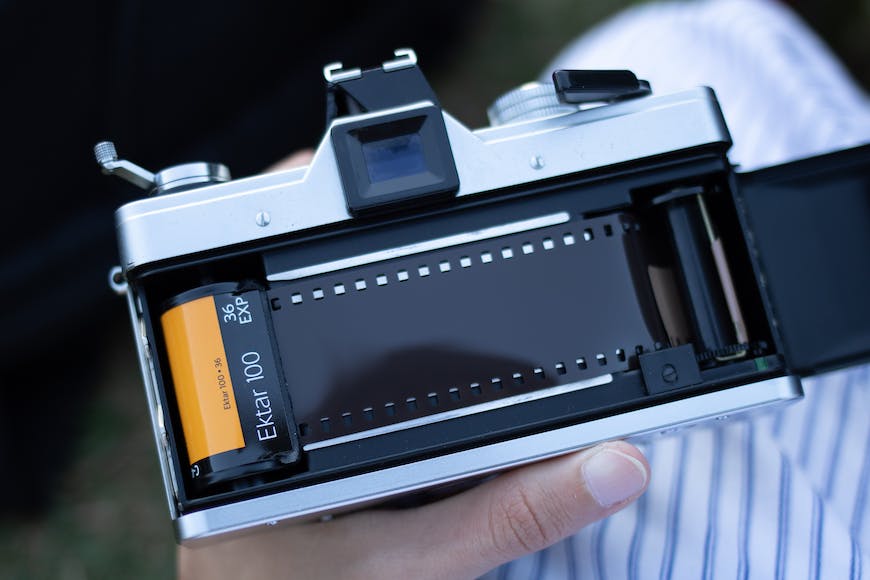
Credit: Athena
I believe that the challenges I’ve outlined above are, in fact, what make analog cameras good for beginners.
Having to get to grips with manual controls encourages beginners to learn and understand the basics of exposure, composition, and camera settings.
Ultimately, being forced to learn these elements from the very beginning will give them a strong foundation and make them a better photographer.
Having limited exposures per roll encourages a more thoughtful and deliberate approach to each shot. You can’t waste a single frame.
That forces beginners to focus primarily on composition and framing, and to think about whether or not they really want to take that photograph and why.
This makes them into a more mindful photographer, not the ‘spray and pray’ version you see so often nowadays, even in the professional realm – who, I would argue, should not really call themselves a photographer at all. Machine operator?
Film photography also promotes creativity. There’s a unique look and feel to film that encourages exploration and the development of an artistic eye.
I also think that the lack of instant feedback, and the fact that you have to wait to see your photos, is a good thing.
Not just for beginners, but for any human.
Digital photography is about instant gratification, whereas with film photography, your gratification is delayed.
This waiting, this anticipation, is so at odds with the general speed of virtually everything else in our modern cultures that it forces you to look at things from a different perspective, which can only help you when you come to create more photographs.
The 3 Types of Film Cameras
Although there are many more than three types of film camera (hello pinhole, hello toy camera), let’s just take a look at the three main types you’re likely to come across and use.
Single Lens Reflex (SLR) Cameras
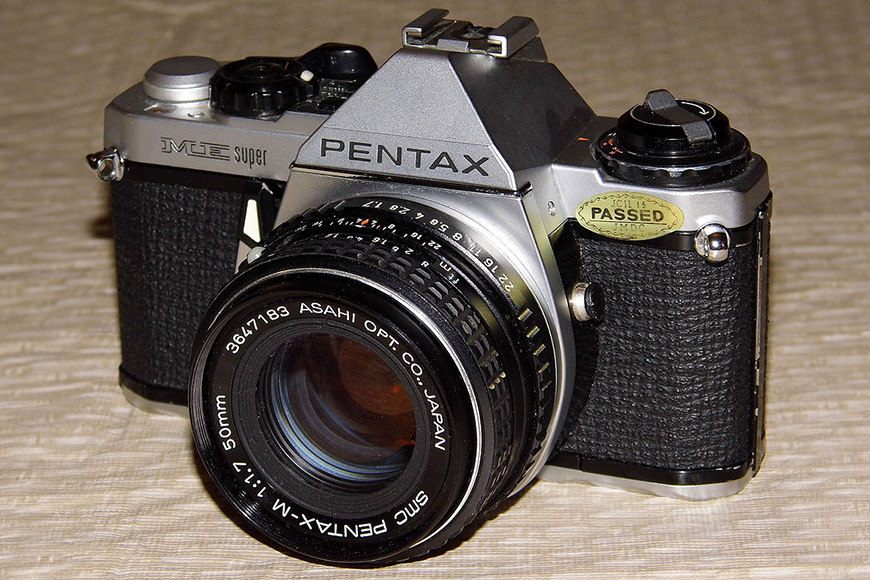
Credit: Joe Haupt from USA, CC BY SA 2.0, via Wikimedia Commons
SLR cameras use a mirror and pentaprism system, which allows the photographer to see exactly what the lens sees through the viewfinder.
When you press the shutter button, the mirror flips up, exposing the film to light.
SLRs are extremely versatile in that they have interchangeable lens systems so that you can shoot in a range of different scenarios.
They can be quite bulky, but they’re solid and well-built.
This is the type of film camera you will learn the most on, as you have to take care of all of the settings yourself, manually.
They’re also particularly good for beginners who want to shoot digital in parallel (or later on), as they have most in common with modern DSLRs in terms of design and operation.
Rangefinders
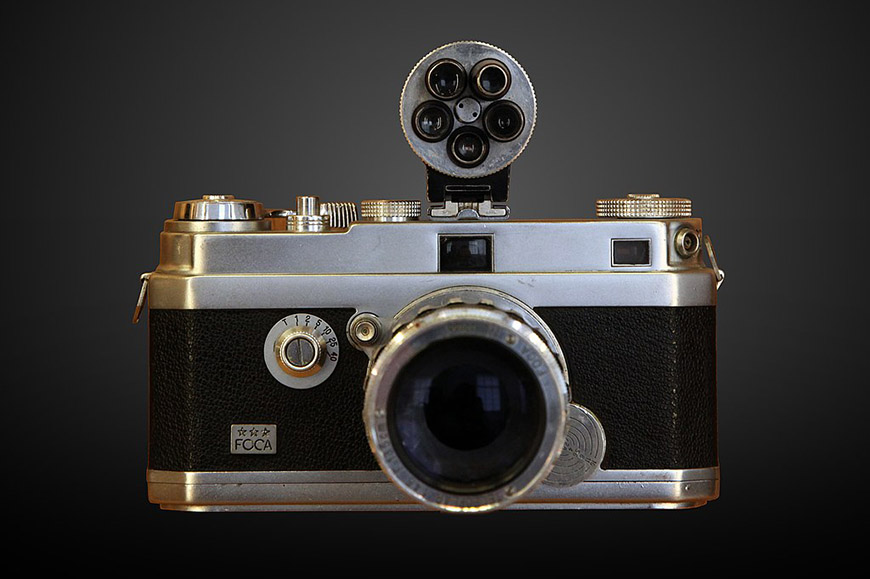
Credit: Rama, CC BY SA 3.0 FR, via Wikimedia Commons
These cameras use a more complicated system for focusing.
They have a separate viewfinder and rangefinder window.
To take a photo, the photographer aligns two images in the rangefinder; once that’s done, the camera is focused accurately.
They are more compact than SLRs and more unobtrusive.
They give you a really retro feel to your film photography and are great fun to learn the photography basics on.
Point-and-Shoot
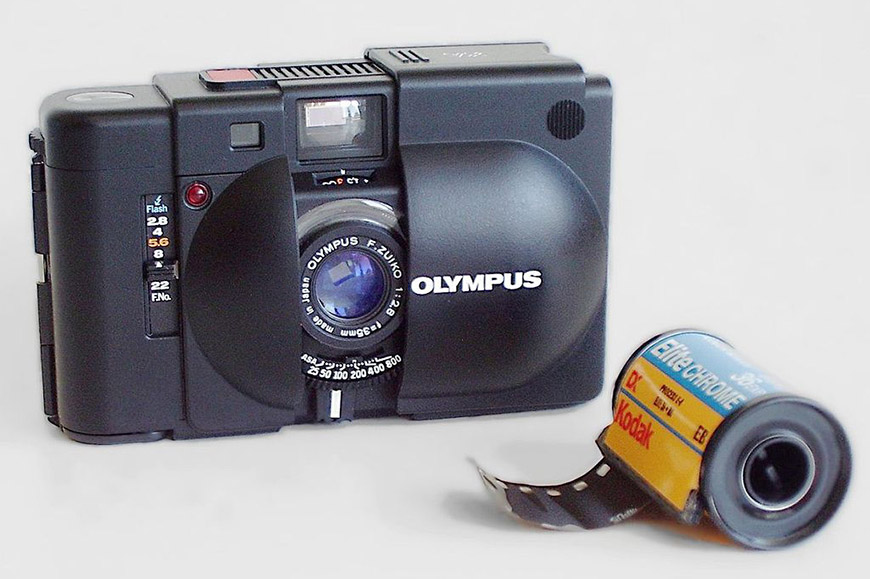
Credit: D. Meyer, CC BY SA 3.0, via Wikimedia Commons
These are designed for simplicity and ease of use.
They typically have fixed lenses, automatic exposure settings and autofocus, and built-in flash. As such, they are extremely user-friendly.
They’re affordable, compact and portable, and designed for casual and quick film photography.
One thing for beginners to consider, though, is that this type of camera (although fun) is not going to teach you the basics of photography in the same way that the other types will.
No manual settings means limited learning.
How Much Does It Cost to Shoot Film in 2024?
It’s difficult to give an exact number. There are a few factors to consider, such as the type and format of the film, the number of exposures, how you will have it developed (will you get scans? Will those be high-res?), and your location.
Whatever the case, though, it’s not cheap.
I found one source that estimates that each exposure costs you a minimum of 0.75 USD.
But why is it so expensive?
Well, first of all, you have to buy the film, and they come at different prices depending on whether they are black-and-white, color, 35mm, or medium format.
Specialty films, like those with unique grain structures or slide films, can be more expensive.
Then you have to consider how much you shoot. The more rolls you use, the higher the overall cost.
Sending your film to a professional lab for development also costs money (this guide to the cheapest places to develop film can help).
Some photographers choose to develop their films themselves to save money, but then you have to factor in purchasing chemicals and equipment.
Once those negatives are developed, if you want digital versions of your film photos, you’ll need to include the cost of scanning (or, if you’re doing it yourself, buying a scanner).
Alternatively, if you want to make physical prints, printing costs need to be added.
There’s also one final cost, smaller than the rest, but it still needs to be factored in.
You need to store your negatives properly so they don’t get damaged.
Check this guide for more on how to develop film at home.
How Much Does a Good Film Camera Cost?
The cost of a good film camera can vary widely based on factors such as brand, model, condition (new or used), the amount of demand for a particular model, and the camera’s features.
You can find budget-friendly options from US$50 to $100.
These will likely be older models with more basic features, possibly compact cameras or point-and-shoots.
If you want to spend more, say between $200 and $500, you can pick up some decent SLRs or rangefinders from reputable brands.
Then, if you spend more than that, you get into the realm of professional-grade analog cameras with advanced features. You’ll be looking at some of the most iconic brands in this price range, like Rolleiflex and Mamiya.
Beyond this, you’re getting into collectibles, and the sky is the limit in terms of price.
It’s important for anyone dipping their toes into the analog camera market to note that it’s dynamic, and prices can fluctuate wildly based on demand, availability, and condition.
If Kylie Jenner starts using a budget point-and-shoot film camera, its price will skyrocket.
Changing fashions aside, other factors influence the price, such as the camera’s condition, compatibility with different films or lenses, and the continued availability (or not) of accessories and support.
Although some of the best deals can be found on eBay, it’s a good idea to buy from reputable sources, such as trusted vintage camera dealers, either a local shop or somewhere like KEH.com.
That can raise the price, but at least you can ensure you receive a camera in good working order, and there’ll be a return policy and sometimes even a limited warranty.
11 Tips for Buying Your First Film Camera
Choosing a first film camera to buy can be somewhat overwhelming.
Here are some tips to help beginners navigate the process and make informed decisions:
Set a budget
Before you start looking, establish a budget. That will guide your search and help you narrow down your options from the outset.
Decide on Features
Consider the features you want to have based on your photography style and what you plan to photograph.
Beginners may find cameras with simple controls and automatic settings helpful, while others might want manual control for a more hands-on experience and a steeper learning curve.
Research Different Types
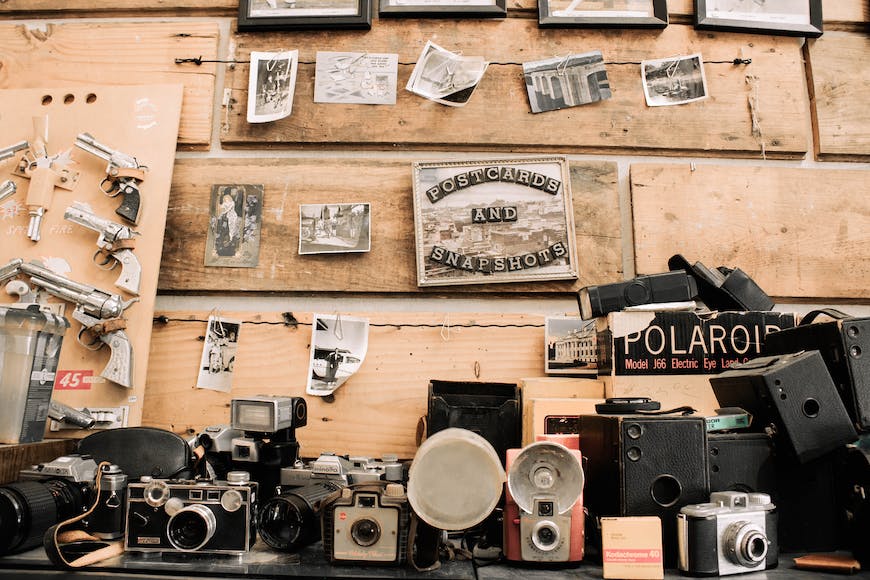
Credit: Mizzu Cho
Once you know the features you want, make sure you understand the different types of analog cameras, including Single Lens Reflex (SLR), rangefinders, and point-and-shoot cameras.
Each type has its advantages and each has different features.
Evaluate Lens Compatibility
If the camera allows for interchangeable lenses, check the availability and cost of lenses.
Some systems have a wide range of affordable lenses, while others may be more limited.
Check Availability of Films
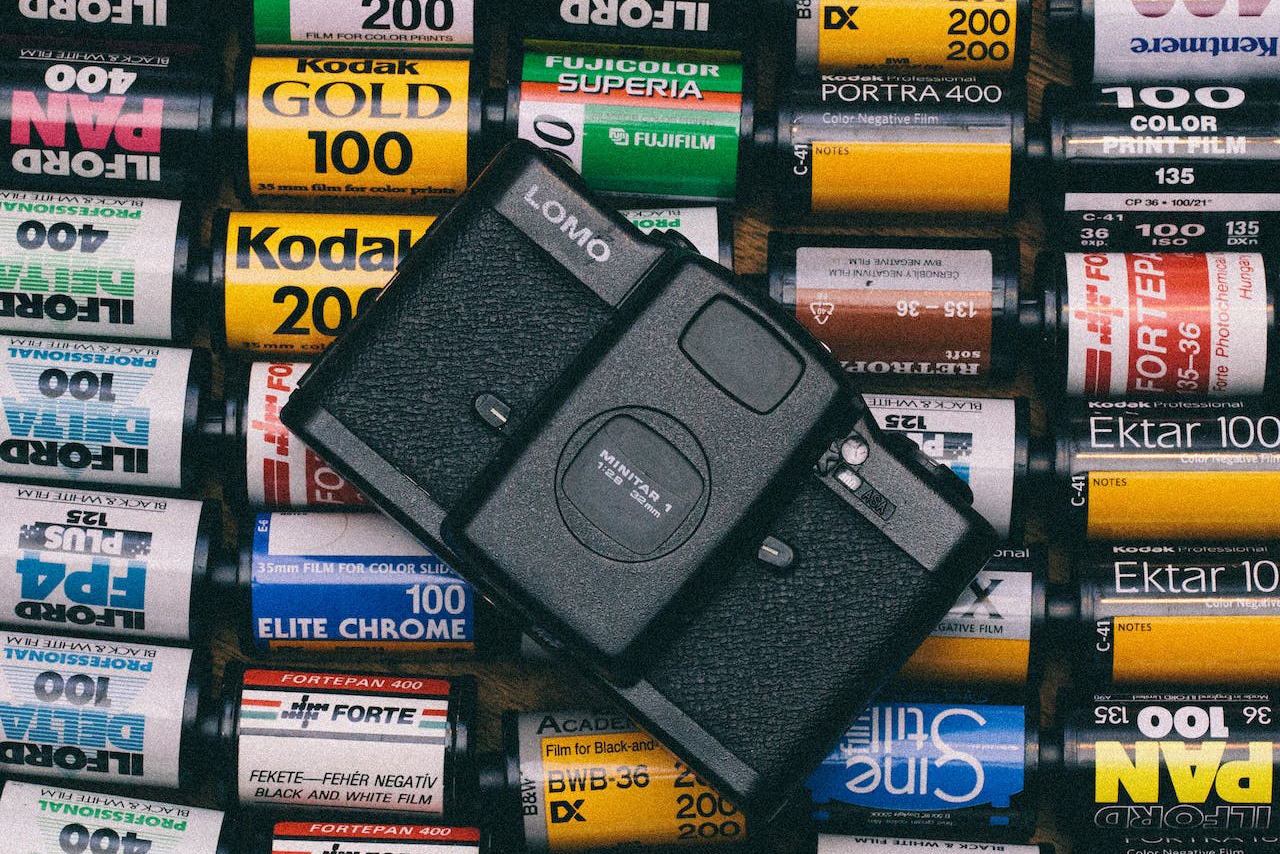
Credit: Balazs Benjamin
See what film type the camera uses. Common film formats like 35mm are generally more accessible and affordable, while less common formats might be more expensive.
Consider the Camera’s Condition
Check for signs of wear, functionality of controls, and any potential issues.
If buying used, inquire about the camera’s history and maintenance.
This is also a good time to find out about the availability of spares and whether anyone offers repairs in case your camera needs a service in the future.
Explore Online Marketplaces
Online platforms like eBay, KEH, or local classifieds can be good places to find film cameras.
Read reviews, check seller ratings, and ask sellers questions.
Look for Bundle Deals
Some sellers offer bundle deals that include accessories like lenses, carrying cases, or additional film rolls.
This is a great way for beginners to start out with a complete kit.
Visit Local Camera Shops
Local camera shops often have knowledgeable staff who can guide you and let you physically handle different cameras.
They may also offer warranties or return policies.
Join Photography Communities
Online forums and social media groups dedicated to film photography are excellent resources for advice.
Members often share their experiences with specific camera models and provide valuable on-the-ground insights.
Be Patient
As someone who has FOMO’ed into a couple of analog camera eBay purchases, I’d recommend you take your time in the decision-making process.
Be patient and wait for a good deal that meets your requirements.
Rushing into a purchase may lead to film-shaped regrets further down the line.
What Film Should a Beginner Use?
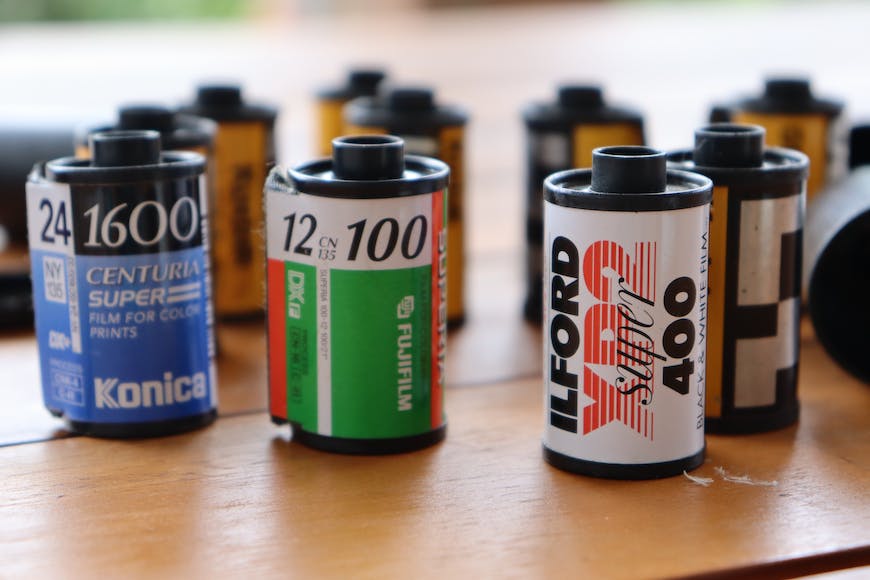
Credit: Rafael Gomez Aguilar
First of all, you need to work out the kinds of lighting situations you primarily want to shoot in.
That determines the ISO rating of the film you buy.
The lower the ISO rating (100, 200), the less grain the film has to capture the light, so these are best for bright conditions.
On the other hand, higher ISO films (800, 1600) have more grain and are therefore better for low-light conditions.
You also need to think about the look you want.
Different film stocks have very different aesthetics. You can look at examples of these online to get an idea of the kind of look you’d like.
Either way, it’s a good idea to experiment with different stocks, black and white, color, and different ISOs, to figure out what you need.
But you need to approach your film photography experiments with care so that they don’t get too expensive.
Personally, I find a good, general walk-around film is either the Kodak Gold 200 (if I’m shooting color), or a Kodak Tri-X 400 or Ilford IP5+ 400 (If I’m shooting black and white).
Although the ISO 400 black and white films are too grainy for bright light, I like my black and white images grainy, and 400 is just about OK if I end up taking a photo in dimmer light.
If I know the light conditions will be subdued, though, I won’t load my camera with the Kodak Gold 200; I’d choose an ISO 400 color film instead.
FAQs About Film Cameras
Are film cameras good for photography?
Yes, they are great for photography.
They are, after all, the original. As such, they give you, the photographer, a sense of being connected to the beginnings of photography.
Film photography provides a more tactile experience that encourages creativity, forces you to learn, and forces you to slow down. Most enjoyable!
Plus, there’s nothing like the look and feel of images created with film cameras.
Can I still buy a film camera?
Yes, you can.
There are plenty available, both new and secondhand, in either camera shops, on eBay, or from specialized dealers such as KEH.com.
How do you take good pictures with a film camera?
In the same way you do with any other camera: by developing your eye.
From a technical standpoint, though, it’s important to understand the basics of photography – aperture, shutter speed, and ISO.
What film camera should a beginner buy?
That depends on their budget and photography preferences.
I recommend they read the above and research thoroughly before investing.
It also depends on how steep they want their learning curve to be. For example, point-and-shoots are easy to use right out of the box, whereas an SLR will take more time to get to grips with.
Are disposable film cameras any good?
It’s a matter of personal preference, but I think they are.
They are extremely easy to use, and a lot of fun.
Disposable cameras are also a great way to practice film photography as they’re so portable and user-friendly.
Does Olympus still make film cameras?
No, it doesn’t.
But the company produced some of the most popular analog cameras (like the PEN series), and you can still pick those up secondhand.
What are vintage film cameras called?
They can be called retro, or old-fashioned film cameras, or analogue cameras, or just ‘vintage cameras’.
Can film cameras be repaired?
Yes, depending on the availability of parts and people who know how to service them.
This is definitely something that needs to be part of your research before you buy.
Is developing film bad for the environment?
Unfortunately, yes, film photography is bad for the environment.
The production of film uses gelatin, which is an animal by-product, and film development is also extremely chemically intensive.
Are there film cameras with autofocus?
Yes!
Many of the compact cameras have autofocus, and also many of the later, professional-grade SLRs.





